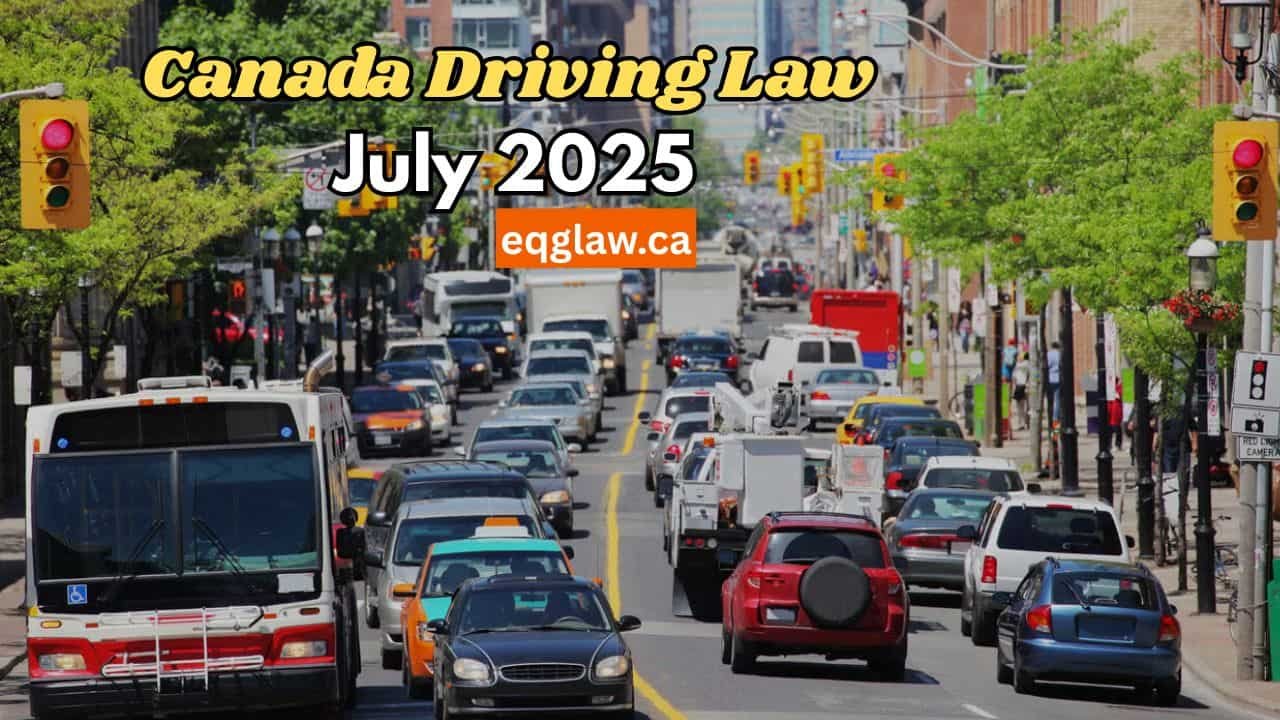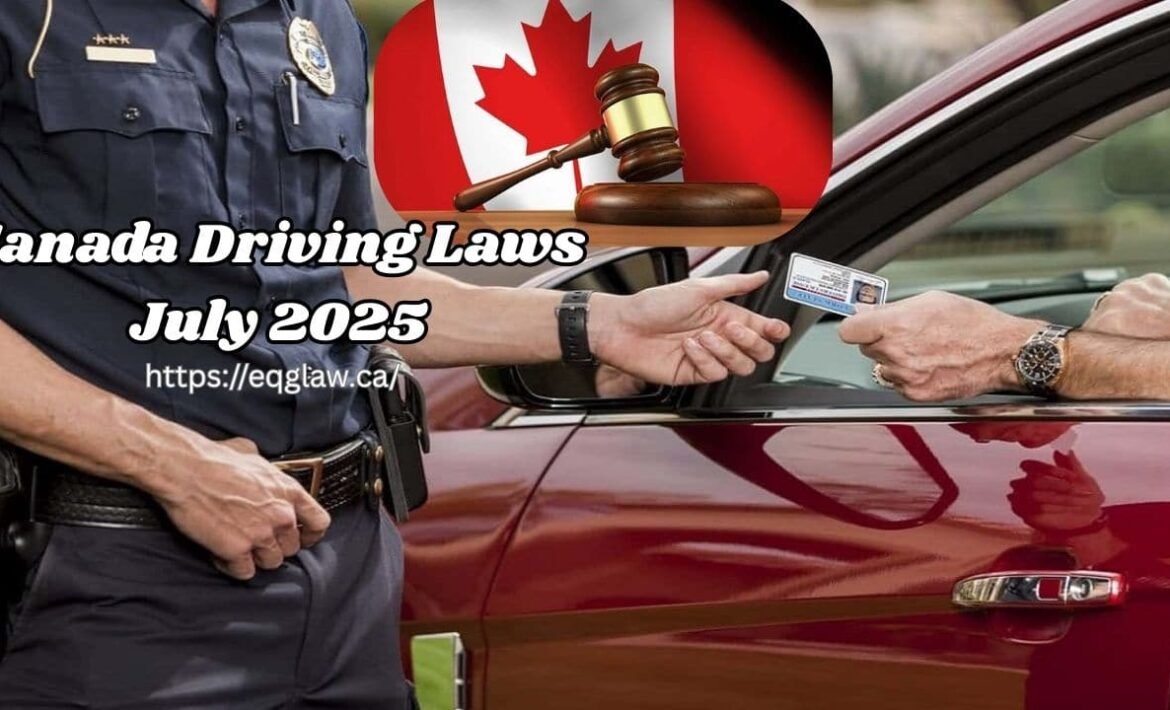If you’re behind the wheel anywhere in Canada past July 1, 2025, there are a few key new driving regulations you should be aware of. From school zone speed limits to a proposed update on impaired driving, the government has implemented national changes to keep roads safer for all.
Reduced Speed Limits Near Schools – All Day, Daily
Starting now, every school zone in Canada will feature an everyday, 24/7, 30 km/h speed limit at all times of the day. It doesn’t matter if it’s a weekend or nighttime – slow down near schools 24/7. That’s about keeping children and pedestrians safe, not just during school hours.

Distracted Driving Laws Are Now Stricter
Think texting and driving is bad? It’s even worse now.
Canada’s new regulations now classify any distraction in the driver’s seat as a contravention. That includes:
- Checking your smartwatch
- Tweaking your GPS while in motion
- Eating or drinking
- Watching videos
- Using smart glasses or other wearable technology
Fines range from $600, with drivers risking demerit points, suspensions of their license, or even more severe penalties for subsequent infractions. It’s easy: pay attention to the road—nothing else.
Alcohol Limits Just Got Stricter
To lessen impaired driving, the legal blood alcohol concentration (BAC) limit has been reduced to 0.05% in Canada. Which means a single drink may put you over the legal limit, particularly for young or new drivers.
- Zero-tolerance laws now extend to:
- Drivers younger than 22
- New licensees
- Commercial vehicle drivers
Smarter Cars Are Now Mandatory (Sort Of)
If you’re buying a brand-new car in Canada after July 2025, it must come equipped with advanced safety tech, also known as ADAS (Advanced Driver-Assistance Systems). These features include:
- Automatic emergency braking
- Lane-keeping assist
- Adaptive cruise control
This legislation isn’t covered under older cars, yet automobile manufacturers are now producing safer vehicles as the norm.
Pedestrian Safer Zones
Canada is currently expanding safer pedestrian zones, particularly where pedestrians congregate in large numbers. These zones will feature:
- Lower speed limits
- Additional traffic cameras
- Improved signage
Motorists have to give way to people walking at all times within these special areas. If you get caught speeding or running a stop sign, you’ll be penalised more than previously.

Commercial Drivers Under New Federal Regulations
If you operate a truck or commercial truck, you’ll want to take extra notice:
- Speed limiters are now required on trucks weighing over 11,000 kg, limited to 105 km/h.
- Electronic logging devices (ELDs) must monitor work hours and prevent drivers from overworking or driving while fatigued.
- New training and testing requirements pertain to new commercial drivers.
Green Incentives and Eco-Driving Requirements
Canada is also encouraging greener driving. If you’re purchasing an electric or hybrid vehicle, certain government rebates now require you to take an eco-driving course.
New cars must also comply with revised carbon emissions standards at the same time. The nation is working towards a cleaner and more ethical way of driving.
One National Driver Record System
Traffic offences used to not stick with you from province to province. That’s no longer the case.
There is a new national driver record database that connects your driving history across all provinces and territories. Therefore, if you receive a speeding ticket in British Columbia, it will impact your license in Ontario, for example.
Final Thoughts
Canada’s July 2025 driving law changes mark one of the most significant safety upgrades in recent years. These laws aren’t just rules—they’re built to protect drivers, passengers, and pedestrians alike.








